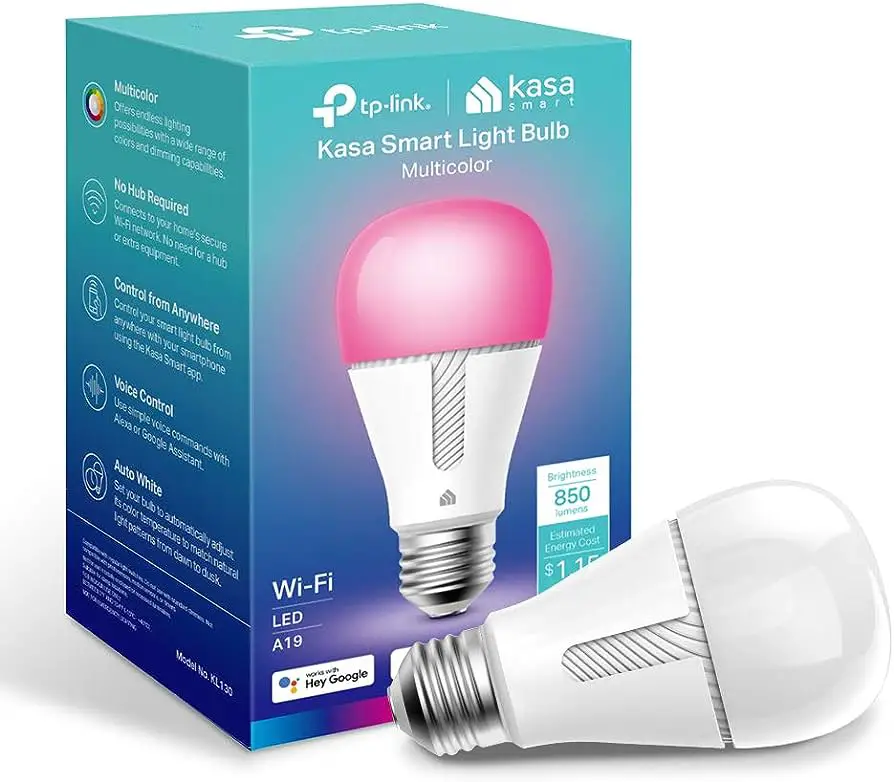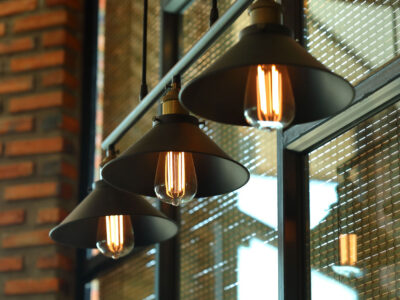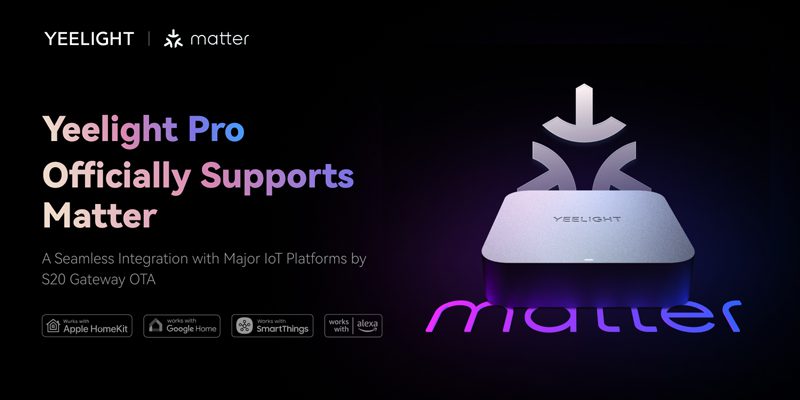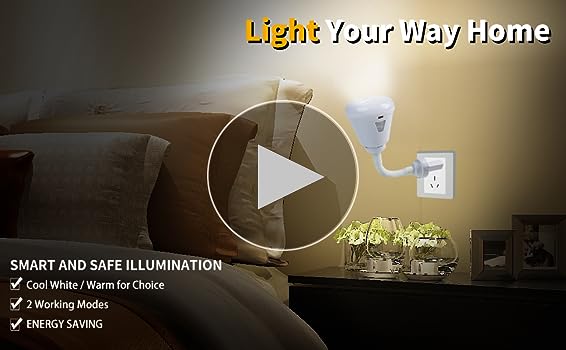Discover the Endless Possibilities: Types of Smart Lighting Systems Available

Different types of smart lighting systems available include Wi-Fi enabled bulbs, Bluetooth-enabled bulbs, smart lighting switches, and smart lighting kits. These systems allow users to control their lights remotely via smartphone apps or voice assistants, adjust brightness levels, and even change colors to create different moods in a room.
With the advancement of technology, smart lighting systems are becoming more popular in homes and businesses for their convenience, energy efficiency, and customization options. Whether you want to automate your lights, create the perfect ambiance, or save energy, there’s a smart lighting system out there to suit your needs.
Enhancing Traditional Lighting
Smart lighting systems offer a range of options to enhance traditional lighting. With options like voice control, automated schedules, and color customization, these systems provide convenience and efficiency. Whether you’re looking to create a cozy ambiance or improve energy efficiency, smart lighting has something for everyone.
Smart lighting systems have revolutionized the way we illuminate our homes, providing us with convenience, energy efficiency, and enhanced control. One of the key advantages of these systems is the ability to enhance traditional lighting and take it to the next level.
In this section, we will explore some of the different types of smart lighting systems available that allow you to do just that.
Wi-Fi Enabled Bulbs:
- Connect directly to your home Wi-Fi network, eliminating the need for additional hubs or controllers.
- Easily controlled using a smartphone app, allowing you to turn them on/off, adjust brightness, and even set schedules from anywhere.
- Enable remote access, so you can manage your lights even when you’re away from home.
- Some models offer compatibility with voice assistants like Amazon Alexa and Google Assistant, allowing you to control the lights with simple voice commands.
Voice Control Compatibility:
- Some smart lighting systems are integrated with popular voice assistants like Amazon Alexa, Google Assistant, or Apple Siri.
- This means you can control your lights with just your voice, making it incredibly convenient and hands-free.
- Simply ask your voice assistant to turn the lights on/off, dim or brighten them, or even change the color.
- Voice-controlled smart lighting systems add a touch of futuristic elegance to your home and make controlling your lights effortless.
Color Changing Options:
- Many smart lighting systems offer color-changing capabilities, allowing you to create different moods and ambiances.
- With a wide range of colors to choose from, you can set the perfect lighting for any occasion, whether it’s a relaxing evening, a party, or a movie night.
- Some color-changing bulbs also offer the option to sync with your music or movies, creating an immersive experience.
- Adjust the color temperature of your lights to match your preference and create the perfect atmosphere in any room.
Smart lighting systems provide a range of options to enhance traditional lighting. With the convenience of Wi-Fi-enabled bulbs, voice control compatibility, and color changing capabilities, you can transform your home into a personalized, connected, and versatile space. Embrace the power of smart lighting and elevate your lighting experience to a whole new level.
Adding Ambiance To Any Room
Smart lighting systems offer a range of options to enhance the ambiance of any room. With diverse options like dimmers, color-changing bulbs, and voice-activated controls, these systems can effortlessly create the perfect atmosphere. Whether you want a cozy and warm setting or a vibrant and energetic environment, smart lighting has you covered.
Smart lighting systems offer a range of features that can enhance the ambiance of any room in your home. With flexible installation options, customizable colors and patterns, and integration with digital assistants, these systems provide a convenient and versatile solution for creating the perfect atmosphere.
Whether you want to create a cozy and relaxing environment or set the stage for a lively gathering, smart lighting systems have you covered.
Flexible Installation Options:
- Wireless: Smart lighting systems use wireless technology, allowing for easy installation without the need for additional wiring.
- Retrofitting: Retrofitting options allow for the integration of smart lighting into existing fixtures, making it a great choice for those who don’t want to replace their current lighting setup.
- Variety of bulb types: Smart lighting systems are compatible with various types of bulbs, including LED, incandescent, and fluorescent, giving you plenty of options to choose from.
Customizable Colors And Patterns:
- Color temperature adjustment: Smart lights offer the ability to adjust the color temperature, allowing you to switch between warm and cool lighting to suit your mood and preferences.
- RGB color selection: With RGB (Red, Green, Blue) technology, smart lighting systems provide an extensive range of colors to choose from, enabling you to create vibrant and dynamic lighting effects.
- Pre-set scenes and themes: Many smart lighting systems offer pre-set scenes and themes, allowing you to instantly transform the ambiance of a room with a single tap on your smartphone or voice command.
Integration With Digital Assistants:
- Voice control: Smart lighting systems can be integrated with popular digital assistants such as Amazon Alexa, Google Assistant, and Apple Siri, enabling you to control your lights using voice commands.
- Automation and scheduling: Set up automation and schedules to have your lights turn on or off at specific times, or have them adjust automatically based on your daily routines or the time of day.
- Smart home integration: Smart lighting systems can be seamlessly integrated with other smart home devices such as smart thermostats, security systems, and entertainment systems, allowing for enhanced convenience and control.
By adding smart lighting systems to any room in your home, you can easily create the ambiance you desire, customize colors and patterns, and seamlessly integrate with other smart home devices. With the flexibility and convenience these systems offer, you can transform your living spaces into inviting and sophisticated environments.
Creating A Complete Smart Home Experience
Discover the various types of smart lighting systems to create a complete smart home experience. From color-changing bulbs to motion sensor lights, these systems offer convenience, energy efficiency, and customization for every room in your home. Whether you prefer voice control or mobile app management, there’s a smart lighting solution to suit your needs.
A smart lighting system is just the beginning when it comes to transforming your house into a fully automated and intelligent home. By integrating your smart lighting with other devices, setting up pre-set schedules, and utilizing a centralized control hub, you can create a complete smart home experience.
Let’s explore these features in more detail:
Centralized Control Hub:
- The centerpiece of any smart home is a centralized control hub, which acts as the brain of the system. It allows you to manage and control all your smart devices, including your lighting system, from a single interface.
- With a centralized control hub, you can easily adjust the brightness, color, and ambience of your smart lights with just a few taps on your smartphone or voice commands.
- By consolidating control through a central hub, you can avoid the hassle of having to use multiple apps or switches to operate different lights in various rooms.
Seamless Integration With Other Smart Devices:
- A major advantage of smart lighting systems is their ability to seamlessly integrate with other smart devices in your home. This integration allows for synchronized and automated actions that enhance convenience and efficiency.
- For example, imagine your smart lights automatically turning on when your smart security system detects motion or when you arrive home, creating a welcoming atmosphere.
- By integrating your smart lighting with other devices, such as smart thermostats or voice assistants, you can create custom scenarios that enhance your daily routines and make your home even smarter.
Pre-Set Schedules And Automation:
- Smart lighting systems offer the convenience of pre-set schedules and automation, allowing you to program specific times for your lights to turn on, off, or dim throughout the day.
- You can create schedules that align with your daily routine, such as gradually waking up to a simulated sunrise or automatically turning off all the lights when it’s time to go to bed.
- Automation features also enable you to synchronize your smart lighting with external events, such as the sunrise and sunset, to mimic natural lighting conditions and improve your overall comfort.
When it comes to creating a complete smart home experience, a smart lighting system offers more than just the ability to control your lights. With a centralized control hub, seamless integration with other smart devices, and pre-set schedules and automation, you can enhance convenience, efficiency, and the overall ambiance of your home.
Experience the future today by introducing smart lighting into your home!
Upgrading Existing Lighting Infrastructure
Upgrade your lighting infrastructure with smart lighting systems. Choose from a range of options to enhance efficiency, convenience, and energy savings. Improve your space with intelligent lighting solutions.
Smart lighting systems offer a multitude of benefits, including increased convenience, energy efficiency, and customization options. Upgrading your existing lighting infrastructure to incorporate smart technology can significantly enhance your home or office environment. Here are some key ways you can upgrade your lighting system:
Replace Traditional Switches With Smart Ones:
- Install smart switches or dimmers to control your lights remotely through a mobile app or voice commands.
- Enjoy the convenience of adjusting the brightness or turning lights on and off from anywhere in your home or office.
- Set schedules or timers to automate your lighting system, providing additional energy savings and security.
Voice Control And Remote Access:
- Connect your smart lighting system to voice assistants like Amazon Alexa or Google Assistant for effortless control.
- Simply use voice commands to turn lights on or off, adjust brightness, or change colors.
- Access your smart lighting system remotely through a mobile app, allowing you to control your lights even when you’re away from home.
Energy Monitoring And Optimization:
- Smart lighting systems can provide real-time energy consumption data, helping you monitor and optimize your energy usage.
- Identify energy-hungry lights or fixtures and make informed decisions to reduce energy waste.
- Utilize features like motion sensors, which automatically switch off lights when no one is present, further enhancing energy efficiency.
Upgrading your existing lighting infrastructure with smart technology empowers you to create a more efficient, convenient, and personalized lighting experience. With options to replace traditional switches, control lights through voice commands and remote access, and optimize energy usage, smart lighting systems offer a wide array of possibilities for transforming your space.
Embrace the future of lighting with these innovative solutions.
Finding The Perfect Fit
Smart lighting systems come in various types, catering to diverse needs. From voice-controlled systems to motion-sensing lights, the options are plenty. Explore the different types of smart lighting systems to find the perfect fit for your home or business.
Smart lighting systems come in various types, each catering to different needs and preferences. When deciding on the perfect fit for your space, there are several key factors to consider. Here are some important aspects to keep in mind:
Energy Efficiency:
- LED Bulbs: Opt for smart bulbs that use energy-efficient LED technology. They consume less power than traditional incandescent bulbs and have a longer lifespan.
- Dimming Capabilities: Look for smart lighting systems that offer dimming options. This feature allows you to adjust the brightness of the lights, saving energy when full brightness is not necessary.
- Motion Sensors: Consider systems with motion sensors that can detect when a room is unoccupied. These sensors can automatically turn off lights, reducing energy wastage.
Compatibility With Existing Infrastructure:
- Smart Hub Integration: Check if the smart lighting system you are considering is compatible with popular smart home hubs such as Alexa or Google Home. This integration allows for seamless control and automation of your lights.
- Wireless Protocols: Determine if the system uses common wireless protocols like Wi-Fi or Zigbee. Compatibility with existing infrastructure, such as routers or smart devices, can make the setup process easier and more convenient.
Advanced Automation Capabilities:
- Scheduling: Look for systems that offer scheduling features, allowing you to automate when your lights turn on and off throughout the day. This is especially useful if you prefer certain lighting scenarios at specific times.
- Voice Control: Consider systems that are compatible with voice assistants like Alexa or Google Assistant. This feature enables you to control your lights with simple voice commands, adding convenience to your daily routine.
- Scene Creation: Look for systems that allow the creation of customized lighting scenes. This feature enables you to set multiple lights to specific brightness levels or colors, creating the perfect ambiance for different activities.
By understanding the energy efficiency, compatibility with existing infrastructure, and advanced automation capabilities of different smart lighting systems, you can find the perfect fit for your needs. Whether you prioritize saving energy, seamless integration, or advanced automation, there is a smart lighting system out there that will suit your requirements.
Ensure you make an informed decision by considering these key factors.
Enjoying The Benefits Hassle-Free
Looking to upgrade your lighting system? Discover the various types of smart lighting available for a hassle-free experience, from color-changing bulbs to motion-activated fixtures. Enjoy the benefits of convenience, energy efficiency, and ambiance with these innovative solutions.
Smart lighting systems have revolutionized the way we illuminate our homes and enjoy the benefits of advanced technology. With a variety of options available, it’s important to understand the different types of smart lighting systems and how they can enhance your living space.
In this blog post, we will explore the various options and guide you through the process of installation, connecting to a smart home ecosystem, and troubleshooting common issues.
Step-By-Step Installation Guide:
- Choose the right smart lighting system for your needs: There are different types of smart lighting systems, such as smart bulbs, smart switches, and smart plugs. Determine which one suits your requirements and preferences.
- Install the necessary components: Depending on the type of smart lighting system, you may need to replace your existing bulbs or switches, or simply add an additional device.
- Connect to a compatible hub or bridge: Some smart lighting systems require a hub or bridge to communicate with other devices. Follow the manufacturer’s instructions to set up the hub and connect your smart lights.
- Download and install the corresponding mobile app: Most smart lighting systems have their dedicated mobile apps for control and customization. Install the app on your smartphone or tablet and follow the setup wizard to pair your devices.
- Configure your preferences: Once your smart lighting system is installed and connected, you can customize settings such as brightness, color, schedules, and automation. Explore the app’s features to make the most of your smart lights.
Connecting To The Smart Home Ecosystem:
- Integration with smart home assistants: Smart lighting systems can be seamlessly integrated with popular smart home assistants like Amazon Alexa or Google Assistant. Connect your smart lights to your preferred assistant and enjoy voice control and automation.
- Sync with other smart devices: Take your smart home experience to the next level by synchronizing your smart lights with other devices, such as thermostats, security systems, or motion sensors. Create customized scenes or routines to enhance convenience and security.
- Explore third-party integrations: Many smart lighting systems offer integrations with third-party platforms and services. Check if your smart lights can connect with music streaming services, virtual reality platforms, or even weather apps for unique lighting experiences.
Troubleshooting Common Issues:
- Connectivity issues: If you’re experiencing connectivity problems with your smart lighting system, try the following steps:
- Ensure your hub and devices are within the recommended range and not blocked by obstacles.
- Check your Wi-Fi network strength and reset if necessary.
- Power cycle your devices by unplugging and reconnecting them.
- Firmware updates: Keep your smart lighting system up to date by regularly checking for firmware updates. This can fix any bugs or compatibility issues and ensure the optimal performance of your devices.
- Compatibility concerns: If you’re having trouble connecting your smart lights to other devices, ensure they are compatible with each other. Refer to the manufacturer’s compatibility lists or consult customer support for assistance.
- App troubleshooting: If the mobile app for your smart lighting system is not functioning as expected, try the following troubleshooting steps:
- Force close the app and restart your smartphone or tablet.
- Clear the app cache and data to eliminate any potential conflicts.
- Uninstall and reinstall the app to ensure a fresh installation.
With this step-by-step installation guide, connecting to a smart home ecosystem, and troubleshooting common issues, you can enjoy the benefits of hassle-free smart lighting systems. Get ready to transform your living space with convenience, customization, and energy efficiency.
Embracing Innovation
Discover the wide range of smart lighting systems available today, including wireless, voice-controlled, and color-changing options, allowing you to embrace innovation and transform your home lighting experience. Upgrade to a smarter, more efficient lighting solution and enjoy the convenience and flexibility it brings to your everyday life.
Smart lighting systems have revolutionized the way we illuminate our spaces, offering a multitude of benefits and functionalities. In this post, we will explore the different types of smart lighting systems available, focusing on the exciting realm of innovation. From integration with the Internet of Things (IoT) to enhanced security features, and the energy-saving potential and sustainability they offer, smart lighting systems are at the forefront of modern technology.
Integration With Internet Of Things (Iot)
- Seamless connectivity: Smart lighting systems seamlessly integrate with the Internet of Things (IoT), allowing users to control their lights remotely from anywhere in the world.
- Voice control functionality: With integration to virtual assistants like Amazon Alexa or Google Assistant, users can control their smart lights using simple voice commands.
- Sensor-based automation: Smart lighting systems can be programmed to respond to various triggers, such as occupancy or ambient light levels, ensuring optimal lighting conditions at all times.
Enhanced Security Features
- Deter potential intruders: Smart lighting systems offer security features such as motion sensors, which can automatically turn on the lights when someone approaches the property. This helps deter potential intruders and enhances overall security.
- Away mode simulation: When you’re away from home, smart lighting systems can simulate your presence by automatically turning on and off lights at different times, creating the illusion that someone is home, deterring potential burglars.
- Integration with security systems: Smart lighting can be seamlessly integrated with other security systems, such as alarms or surveillance cameras, creating a comprehensive security ecosystem.
Energy-Saving Potential And Sustainability
- Energy-efficient LED lighting: Smart lighting systems typically use energy-efficient LED bulbs, which consume significantly less energy compared to traditional incandescent bulbs. This not only saves electricity but also reduces carbon footprints.
- Dimming capabilities: Smart lights often come with dimming capabilities, allowing users to adjust the intensity of the light according to their needs. This helps conserve energy and create the desired ambiance.
- Automation and scheduling: Smart lighting systems can automate lighting based on occupancy or specific schedules, ensuring lights are only active when needed, thus reducing energy waste.
Smart lighting systems have made significant strides in embracing innovation, offering a seamless integration with the Internet of Things (IoT), enhanced security features, and impressive energy-saving potential. By providing a convenient and efficient lighting solution, these systems not only elevate our living spaces but also contribute towards a sustainable future.

Credit: www.eurilighting.com
Frequently Asked Questions On What Are The Different Types Of Smart Lighting Systems Available?
Which Smart Lighting System Is Best?
The best smart lighting system may vary depending on individual preferences and needs.
What Is Smart Lighting Systems?
Smart lighting systems are technologically advanced lighting setups that can be controlled remotely and automated for convenience and energy efficiency.
What Are The Five Different Options For Types Of Lights?
The five different types of lights are incandescent, fluorescent, LED, halogen, and compact fluorescent.
What Are The Different Electrical Lighting System?
The different electrical lighting systems include incandescent, fluorescent, LED, and halogen.
Conclusion
To sum up, smart lighting systems offer a variety of options to enhance your home or office lighting experience. Whether you’re looking to automate your lights for convenience, save energy and money, or create a personalized ambiance, there is a smart lighting system that will meet your needs.
From basic smart bulbs that can be controlled via an app, to more advanced systems that offer color-changing capabilities and integration with other smart devices, the possibilities are endless. By investing in a smart lighting system, you can not only improve the functionality and aesthetics of your space, but also contribute to a more energy-efficient and sustainable future.
So, take the time to explore the different types of smart lighting systems available and choose the one that best suits your preferences and lifestyle. Enjoy the benefits of a well-lit, smartly connected space that can transform the way you approach lighting in your everyday life.





